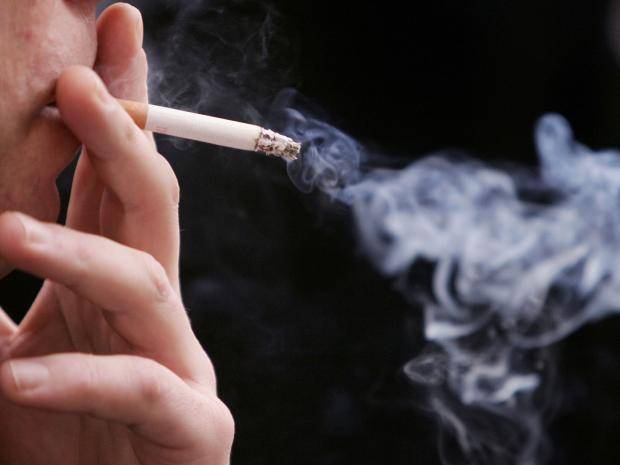By: Sahil Manzoor
Tobacco belongs to the nightshade family and is cultivated for its dried leaves andits plants grow 1 to 3 metres tall and produce more than 10 broad leaves. The leaves are than dried, processed, and used to manufacture cigars, cigarettes, etc. which are, as we all know, extremely dangerous to human health and have immense health hazards.
Cigarettes contain about 4000 chemicals, of which 43 are carcinogenic (cancer causing chemicals) including polycyclic hydrocarbons, ammonia, which cause cellular irritation, formaldehyde and oxides of nitrogen. Carbon monoxide is one of the most dangerous and poisonous gases which reduces the oxygen carrying capacity among the smokers and affects their lives worldwide.
It is believed that in 1492, Christopher Columbus landed on Tobago Island, and he found that the natives of the island were using the dried tobacco leaves for pleasure. It has also been considered that since then, the dried leaves of the tobacco plant have spread throughout the world in different forms, like chewing forms, cigars, etc. Nicotine, the major component, in the tobacco leaves has harmful effects on human health as it causes heart attacks, affects the nervous system besides other hazardous impacts though it has been used for agricultural purposes as an insecticideand also for gastro-intestinal disorders. Nicotine is the addictive component and makes one dependent, sick, arrogant, unhygienic, and short tempered.
Tobacco also contains tar, which causes lung cancer and is responsible for many diseases among active smokers. Active smokers are ten times more likely to die from lung cancer than passive smokers. The mixture of carbon monoxide and nicotine temporarily increases the heart rate and blood pressure and is responsible for the strokes as well.Carbon monoxide reduces the oxygen carrying capacity of the muscles, brain, making them stressed organs. Consuming tobacco products in different forms triggers IBS (irritable bowel syndrome) which is common throughout the world these days.
One thing is clear that smoking can infect the stomach and the stomach spoils food, which causes intestinal irritation. Smoking is not only a concern for the active smokers as it also affects the passive smokers by causingcough, sneezing,irritation and greatly pollutes our environment.
31st of May is designated as‘anti-smoking day’ and isobserved throughout the globe, with different seminars, anti-tobacco campaigns held at colleges, schoolsand different public places. Smoking cigarettes can damage the heart, blood vessels, and blood cells. The chemicals and tar in cigarettes can increase a person’s risk of atherosclerosis, which is the buildup of plaque in the blood vessels. This buildup limits blood flow and can lead to dangerous blockages. Smoking also increases the risk of peripheral artery disease (PAD), which occurs when the arteries in the arms and legs start to narrow, restricting blood flow. Researches show a direct link between smoking and developing PAD. Even those who used to smoke face a higher risk than people who never smoked.
Smoking affects lung health because a person breathes in not only nicotine but also a variety of additional chemicals. Cigarettes are responsible for a substantial increase in the risk of developing lung cancer. This risk is 25 times greater for men and 25.7 times greater for women. The CDC reports that roughly 9 out of 10 lung cancer deaths are linked to smoking. Smoking cigarettes also presents a greater risk of developing and dying from chronic obstructive pulmonary disorder (COPD). In fact, the American Lung Association reports that smoking causes 80 percent of COPD deaths.Cigarettes are also linked to developing emphysema and chronic bronchitis. They can also trigger or exacerbate an asthma attack.
Smoking cigarettes can damage a woman’s reproductive system and make it difficult to achieve pregnancy. This may be because tobacco and the other chemicals in cigarettes affect hormone levels. In males, the more cigarettes a person smokes and the longer they smoke, the higher the risk of erectile dysfunction. Smoking can also affect the quality of the sperm and therefore reduce fertility.
It also weakens a person’s immune system, making them more susceptible to illness. It can cause eye problems, including a greater risk of cataracts and age-related macular degeneration.Other vision problems related to smoking include: dry eyes, glaucoma, and diabetic retinopathy. People who smoke have double the risk of gum disease. This risk increases with the number of cigarettes a person smokes and can limit a person’s ability to taste and smell things properly. It can also stain the teeth yellow or brown.
A person who smokes may experience premature aging, wrinkled skin anda higher risk of skin cancer especially of the lips.In addition to the well-documented link with lung cancer, smoking cigarettes can also contribute to other forms of cancer. The American Cancer Society reports that cigarette smoking causes 20–30 percent of pancreatic cancers. People who smoke are also three times as likely to develop bladder cancer as people who do not. It also doubles a person’s risk of stomach cancer besides mouth cancer, laryngeal cancer, throat cancer, oesophageal cancer, kidney cancer, cervical cancer, liver cancer, colon cancer, and acute myeloid leukaemia.
So, when are you quitting?
sahilmanzoor0401@gmail.com






